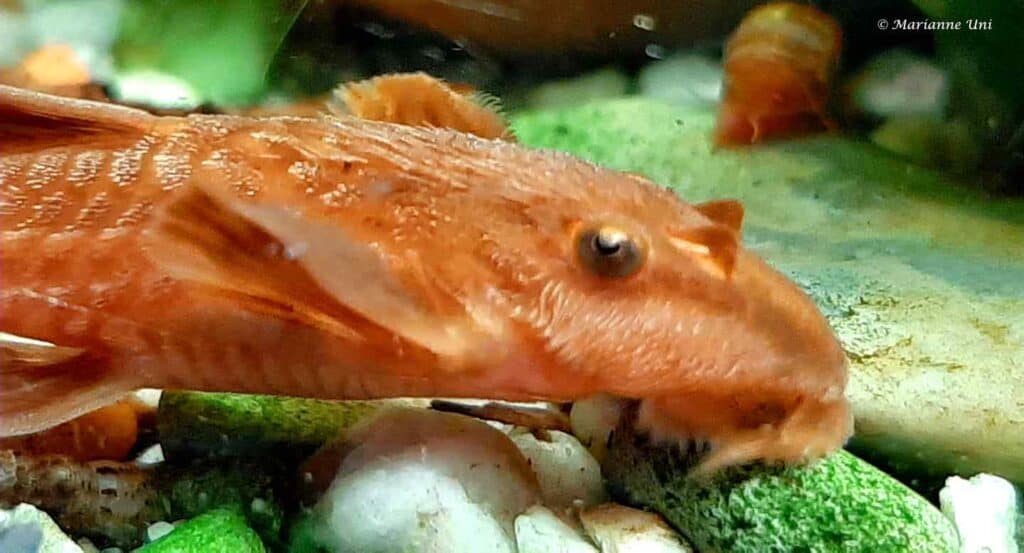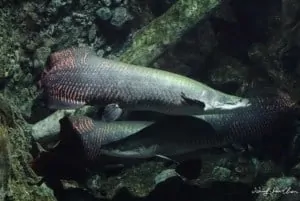Rineloricaria sp. – Red Lizard Catfish – L010a
As you can see from the name, Rineloricaria sp. L010a has not yet been officially described, but they do have an L number. Their common names are Red Lizard Catfish or Red Whiptail Catfish.
You can read more about the L-number system here: L-Numbers and LDA-numbers? The explanation!
Description
The Red Whiptail Catfish is a peaceful fish that will completely ignore its tank mates. Can be kept alone or in a group. They usually only become active in the evening. A well-filtered aquarium with running water, lots of decoration (particularly driftwood) is particularly appreciated. They can reach a maximum length of about 12 centimeters.
Sexual dimorphism
You can tell the difference between male and female by the short spines (odontes) on the male’s head and pectoral fins. These odontes are absent in females.
Origin
The red color was probably caused by human actions. This means that this color form (most likely) does not occur in nature. It is not known where the original fish came from.
Diet
Rineloricaria sp. L010a easily accepts most types of food: bloodworms, mosquito larvae, shrimp, flakes, catfish and algae tablets, washed and unsprayed vegetables (lettuce, spinach, cucumber, eggplant, zucchini).
The Aquarium
An aquarium of about 60 centimeters in length is sufficient to provide sufficient space for these fish, which are active at night. A densely planted aquarium with many hiding places in the form of driftwood, rocks, artificial (breeding) caves and dim lighting is preferred, because this catfish feels most comfortable under these conditions and can claim a small territory. Can be kept with conspecifics without any problems, provided that sufficient hiding places are provided. Naturally, a somewhat larger aquarium is necessary: for a group of 2-3 fish, an aquarium of 80x35cm is needed.
Sand is the most suitable substrate for the Red Lizard Catfish, as they like to burrow. It is better not to use sharp gravel as this can lead to injuries.
As with most tropical fish from South America, soft, slightly acidic water is optimal. This can be obtained by filtering over peat or using Black Water Extract. But this Whiptail Catfish is a particularly strong, adaptable fish, and will do well in harder, more alkaline water, and in some cases even reproduce.
Breeding the Red Lizard Catfish
The female lays about 45 eggs in a cave. The male guards and fans the eggs until they hatch after about eight days. They then continue to feed on their egg yolk sac for quite some time. The male then keeps the young fish in the cave. Only when it goes outside to feed are the young fish unprotected. 18 days after hatching the egg yolk sac is used up. The young fish then occasionally go outside to feed, but return for a longer period of time. In the cave, they are reasonably protected by the male, outside they have to fend for themselves.
Comments
It is not known whether Rineloricaria sp. L010a occurs in the wild, or is a human ‘manufactured’ variant of the Whiptail Catfish.
Author
Jonas Hansel – Piranha-info.com
Copyright images
Gert Jan van Beek
Jeroen Beumer
Erwin van Zwol
Marianne Uni
Thomas van Hastenberg
Karel Broekaert









Reviews
There are no reviews yet.